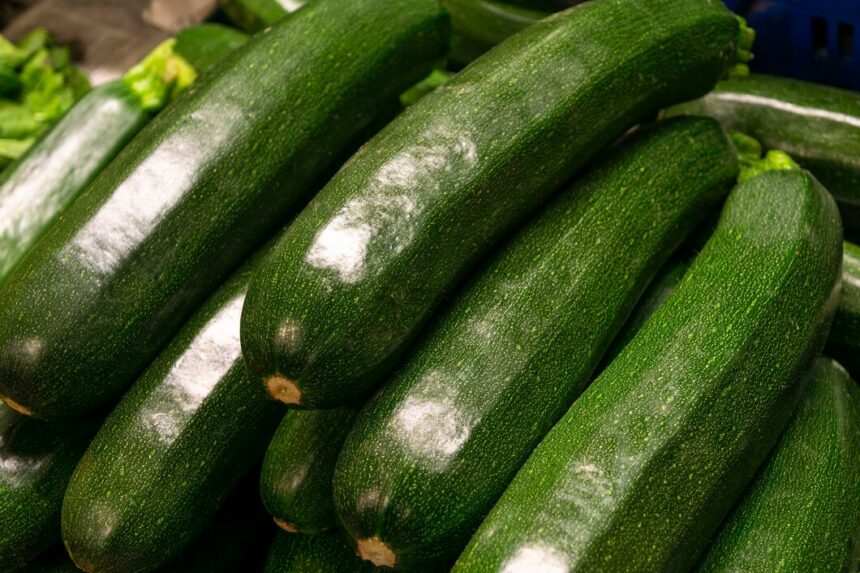Zucchini, a versatile and fast-growing crop, has become increasingly popular among South African farmers due to its high yield and relatively short growing cycle. With the right conditions, inputs, and care, you can successfully grow, harvest, and store zucchini for both local and export markets. This guide will walk you through the entire process of growing zucchini, from seed to harvest and storage.
1. Land Preparation
Before planting zucchini, proper land preparation is crucial for a successful crop. Zucchini grows best in well-drained, fertile soil with a pH between 6.0 and 7.5. Loamy or sandy soils with good organic content are ideal for zucchini cultivation.
- Steps for Land Preparation:
- Clear the field of any previous crop residue, weeds, and debris.
- Till the soil to a depth of 25-30 cm to loosen it and improve aeration.
- Apply compost or organic matter to enrich the soil.
- If soil pH is too low (acidic), lime the soil to raise the pH to an optimal level.
2. Planting Zucchini Seeds
Zucchini is typically grown from seeds directly sown into the field. In South Africa, the best planting season is during the spring or early summer, as zucchini prefers warm temperatures between 18°C and 30°C.
- Planting Process:
- Sow seeds directly into the soil at a depth of 2-3 cm.
- Space seeds 60-90 cm apart within rows and 1-1.5 meters between rows.
- If planting in rows, use a mechanical seed planter for larger operations. Smaller farms can plant by hand.
- After sowing, cover the seeds with soil and water the area lightly.
3. Fertilization and Soil Nutrients
Zucchini plants are heavy feeders and require a well-balanced supply of nutrients. A soil test is recommended before planting to assess nutrient levels and apply the necessary fertilizers.
- Fertilizer Recommendations:
- Apply a balanced fertilizer like NPK (10-10-10) at planting.
- Side-dress with nitrogen-rich fertilizer (like urea or ammonium nitrate) when the plants begin to flower.
- Organic fertilizers such as compost or manure can be used to improve soil structure and nutrient availability.
- Micronutrients like magnesium and calcium should be monitored and supplemented as needed.
4. Watering and Irrigation
Zucchini requires consistent moisture, but overwatering should be avoided to prevent root rot and other water-related diseases.
- Watering Frequency:
- Zucchini needs about 2-3 cm of water per week.
- Drip irrigation is recommended to deliver water directly to the root zone and reduce the risk of foliar diseases. Overhead watering can lead to wet leaves, which increases the chances of fungal infections.
- Mulching around the plants helps retain soil moisture and suppress weed growth.
5. Growth Stages and Care
Zucchini grows rapidly and can reach maturity within 50-70 days, depending on the variety and growing conditions. There are several critical stages in the zucchini growth cycle:
- Germination (7-10 days): Seeds sprout and the first true leaves appear. Ensure the soil is kept moist during this stage.
- Vegetative Growth (2-4 weeks): Plants begin developing more leaves, stems, and roots. At this stage, applying nitrogen-rich fertilizers can encourage healthy leaf and stem growth.
- Flowering (4-6 weeks): Zucchini plants produce large yellow flowers. Both male and female flowers are produced, and pollination is essential for fruit development. If natural pollinators like bees are scarce, hand pollination may be necessary.
- Fruit Development (6-8 weeks): Once pollinated, fruits develop quickly. Zucchini can be harvested when they are 15-20 cm long. Avoid letting them grow too large, as this can lead to a bitter taste and tough texture.
6. Pests and Diseases
Zucchini plants are susceptible to several pests and diseases, so regular monitoring is essential.
- Common Pests:
- Aphids: These small insects suck sap from the leaves and can cause yellowing and curling. Use insecticidal soap or neem oil to control aphid populations.
- Squash Vine Borer: This pest burrows into the stems, causing the plant to wilt. Early detection and removal of affected stems are crucial.
- Cucumber Beetles: These beetles feed on the leaves and transmit bacterial wilt. Insecticides can be applied if beetle populations become significant.
- Common Diseases:
- Powdery Mildew: This fungal disease causes white, powdery spots on the leaves. It can be controlled with fungicides or by ensuring good air circulation between plants.
- Bacterial Wilt: Transmitted by cucumber beetles, this disease causes rapid wilting and plant death. Control cucumber beetles to prevent the spread of bacterial wilt.
- Blossom End Rot: A calcium deficiency can cause zucchini fruits to rot at the blossom end. To prevent this, ensure consistent soil moisture and apply calcium supplements if needed.
7. Pesticide and Herbicide Use
Pesticides and herbicides should be used carefully to protect your crop while minimizing environmental impact.
- When to Use Pesticides:
- Apply pesticides if pest populations exceed economic thresholds.
- Use insecticidal soaps or organic pesticides to reduce harm to beneficial insects.
- Always follow label instructions to avoid overuse and potential damage to crops.
- When to Use Herbicides:
- Herbicides can be used for weed control before planting or early in the growing season.
- Use selective herbicides that target weeds without harming zucchini plants.
8. Harvesting Zucchini
Zucchini is ready for harvest 50-70 days after planting, depending on the variety and growing conditions.
- Harvesting Guidelines:
- Harvest zucchini when they are 15-20 cm long for optimal taste and texture.
- Cut the fruits from the plant with a sharp knife or pruning shears, leaving a small stem attached.
- Harvest frequently (every 2-3 days) to encourage continuous fruit production.
9. Post-Harvest Handling and Storage
Proper handling and storage of zucchini are essential to maintain quality after harvest.
- Storage Tips:
- After harvest, place the zucchini in a cool, shaded area to reduce heat stress.
- Zucchini should be stored at temperatures between 5°C and 10°C with high humidity to prevent dehydration.
- Zucchini can be stored for up to 2 weeks, but it is best consumed or sold fresh to maintain its nutritional value and flavor.
Growing zucchini in South Africa can be highly profitable if managed well. From land preparation to pest control and harvesting, every stage of the zucchini growth cycle requires attention to detail. By using modern technology, efficient irrigation, and careful pest management, South African farmers can maximize yield and ensure healthy, high-quality produce for the market. With the right approach, zucchini farming can become a sustainable and rewarding endeavor.
Join 'Farmers Mag' WhatsApp Channel
Get the latest Farming news and tips delivered straight to your WhatsApp
CLICK HERE TO JOIN






